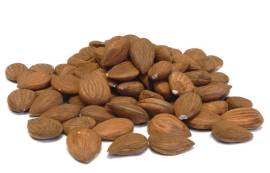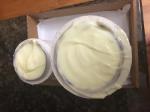Apricot Kernel Oil
Apricot Kernel Oil is well known for its gentle nature and is widely used in the skin care industry, including massage therapy, aromatherapy, soap making and lotion making.
Rich in moisturising and conditioning fatty acids like oleic and linoleic, this oil is ideal for those with dry, irritated, mature and sensitive skin types.
It is high in minerals, as well as vitamins A and E and it is reported to help skin healing and provide itch relief.
Some of the links on this site are affiliate links. If you buy a product through them, I receive a small commission which helps me provide the free information you find on this site. Thank you for your support!
Common Name(s): Apricot Kernel Oil
Botanical Name(s): Prunus Armeniaca
INCI Name: Prunus Armeniaca (Apricot) Kernel Oil
Common Extraction Method: Cold pressing of the apricot kernels.
Plant Origin: Various regions including Kenya and Chili
Physical Description: The colour ranges from the clear, light yellow of the refined oil to the darker, golden yellow of the unrefined oil. It has a good absorption rate without leaving the skin with a heavy, greasy feeling. It's shelf life is upwards of two years, especially if it is stored in a cool, dark location. Refrigeration upon opening is recommended.
Aromatic Description: The refined oil has little in the way of scent but the unrefined oil has a light nutty odour.
Approximate SAP Value: KOH = 195; NaOH = 139
Soap Making Characteristics: Use up to 20% of this oil in your soap recipe. It will produce a nice conditioning lather.
Cautions: Recommended for external use only.
Recipe Suggestions: Both my Apricot Kernel Soap recipe and my Seagrass Soap recipe use this oil but you can easily replace a portion of olive oil or other liquid oil in any recipe with this oil. (Don't forget that any time you change a soap making recipe, you need to run the recipe through a lye calculator in order to get the new correct lye amount.)
Fatty Acid Content: The chart below shows the approximate percentages of fatty acids present in this oil.
| Lauric | Myristic | Palmitic | Stearic | Ricinoleic | Oleic | Linoleic | Linolenic |
| 6 | 66 | 27 | |||||
| Hardness | |||||||
| Cleansing | |||||||
| Full Lather | F/L | ||||||
| Stable Lather | |||||||
| Conditioning | |||||||
This information is provided for reference use only and is not meant to substitute the advice of a licensed health care professional.



Facebook Comments